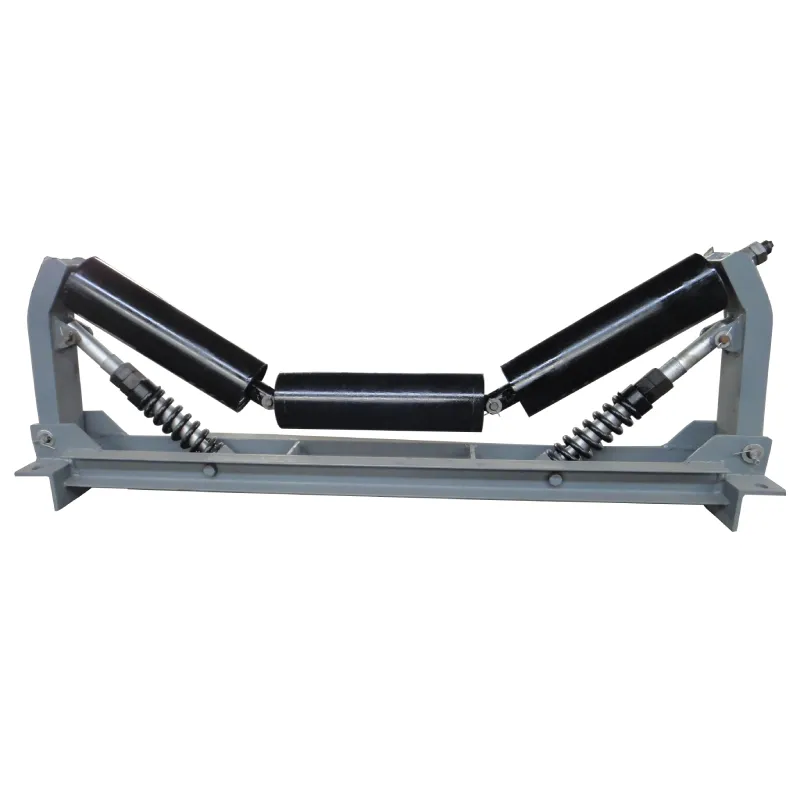Impact Idler Roller for Heavy Shock Loads—Why Choose Ours?
Spring Impact Idler: the insider’s guide to a tougher, quieter loading zone
If you’ve ever watched a belt line at a crusher feed or a transfer point during peak shift, you know the moment of truth is the drop zone. That’s where fines turn into force. An impact idler roller is the unsung part that soaks up that hit so the belt doesn’t have to.
The Spring Impact Idler from Yanshan, Cangzhou (yes, the one coming out of East Outer Ring Road, Hebei) takes a slightly different tack: it uses a pressure spring as the cushion source. As the spring compresses, elastic force increases with the impact, meaning the counterforce scales up when you need it most. In practice, that protects the belt and the splice, and—surprisingly—it can also calm the noise.

Industry trend check
Three shifts, higher drop heights, recycled aggregates, sticky ores—material streams aren’t getting gentler. Plants are shifting from rigid rubber rings to adaptive systems like the impact idler roller with springs, aiming for longer belt life and lower total noise. To be honest, availability has finally caught up with the ideas we’ve been batting around at conferences for years.
Where it fits and why it matters
- Quarries and aggregates: under primary/secondary crusher feed chutes.
- Mining: transfer points with big lumps and unpredictable surges.
- Steel, cement, ports: high-throughput conveyors with abrasive fines.
Many customers say the impact idler roller pays for itself the first time it saves a belt from a gouge at the chute lip. That’s not a lab stat—that’s just field reality.
How it’s built (materials, methods, testing)
Materials: thick-gauge steel shell, hot-vulcanized rubber rings (≈60–75 Shore A), spring packs using high-carbon alloy steel (often 55SiCr or equivalent). Methods: CO2/MAG welded shells, multi-stage labyrinth sealing, precision balancing (target ≈ G40 per ISO practice), and phosphate/paint or powder coat for corrosion resistance.
Testing: static load and cyclic drop trials aligned with CEMA 502 guidance, rotational runout checks, bearing temperature rise, water/dust ingress (IP-rated seals), and random sample balance verification (ISO 21940 family). Service life in real-world use may vary, but in clean, aligned systems we typically hear 2–4× belt life improvement at the impact zone.
| Roller diameter | ≈ 89–159 mm (common) |
| Belt width compatibility | 500–1600 mm (others on request) |
| Rubber ring hardness | ≈ 60–75 Shore A |
| Spring type/source | Alloy steel compression, progressive rate |
| Load rating | Around 2–8 kN per roll (application-dependent) |
| Trough angles | 20°, 35°, 45° frames |
| Bearings/seals | Deep-groove bearings, multi-labyrinth + contact lip |
| Service temperature | -20°C to +80°C (typical) |
| Impact energy absorption | Up to ≈ 60–75% at design load (in-house tests) |

Customization menu
- Diameter/face length and trough frames to match existing stringers.
- Ring compounds for cold, heat, or oil resistance.
- Spring rates tuned to drop height and lump size.
- Sealing packages for wet or dusty plants; stainless options on request.
- Compliance packs: ISO 9001 factory QC, material traceability, CE declarations if required.
Vendor snapshot (real-world differences)
| Vendor | Cushioning method | Seal/balance | Notes |
|---|---|---|---|
| Aohua (Yanshan, Cangzhou) | Progressive spring + rubber rings | Multi-labyrinth, ≈ G40 balance | Strong at high-impact chutes; good parts availability in Asia |
| Generic heavy-duty idler | Thick rubber rings only | Standard seal, G40–G60 | Lower cost; less adaptive under surge loads |
| Poly-disc impact vendor | Polyurethane discs | Enhanced sealing optional | Great abrasion; stiffer response on big lumps |
Case note (quarry, 1200 mm belt)
A limestone quarry retrofitted the impact idler roller under a 1.8–2.0 m drop. After 90 days: belt cover wear down ≈22% versus prior quarter, splice failures: zero, and noise at the loading zone dropped by around 3 dB(A). Not a miracle—just better energy management.
Selection quick tips
- Match spring rate to drop height and lump mass, not just belt width.
- Keep idler spacing tighter in first meter after the chute (impact idler roller rows).
- Align frames and maintain seals; contamination kills bearings faster than load does.
- Verify belt compatibility per ISO 14890 and chute geometry per CEMA guidelines.
Sources and standards (selected):
- CEMA Standard No. 502: Bulk Material Belt Conveyor Troughing and Return Idlers.
- CEMA, Belt Conveyors for Bulk Materials, 7th Ed.
- ISO 14890: Conveyor belts — Specification for rubber- or plastics-covered belts.
- ISO 21940 (balance quality) guidance for rotating machinery; typical target ≈ G40 for idlers.
-
Impact Roller for Belt Conveyor – Durable Solutions for IndustryNewsNov.24,2025
-
Rubber Conveyor Rollers – Quiet, Durable, Sealed BearingsNewsNov.24,2025
-
Industrial Conveyor Belt Rollers: Durable Solutions for Harsh EnvironmentsNewsNov.24,2025
-
Idler Rollers for Belt Conveyors | Durable, Low-Noise OEMNewsNov.24,2025
-
Durable Rubber Conveyor Belt Rollers for Industrial UseNewsNov.24,2025
-
Ceramic Lagging Conveyor Pulley – Anti-Slip, Wear-ResistantNewsNov.17,2025






























